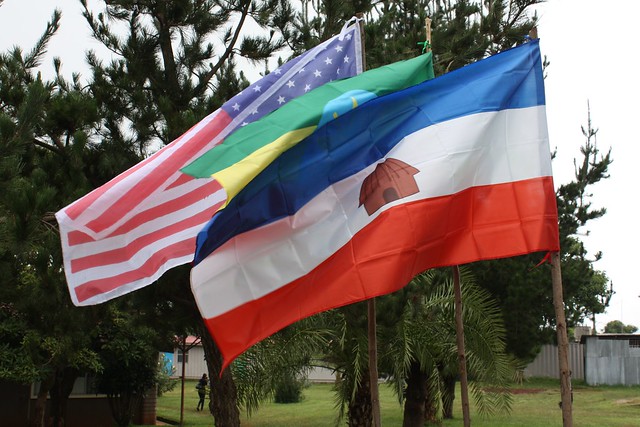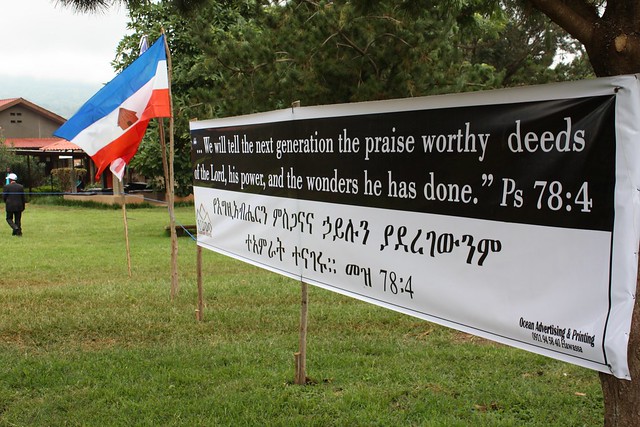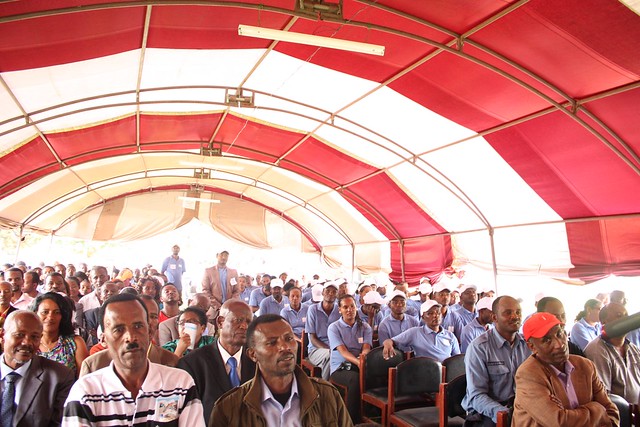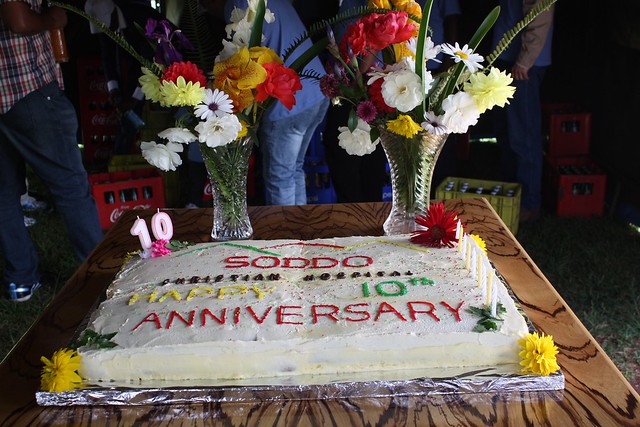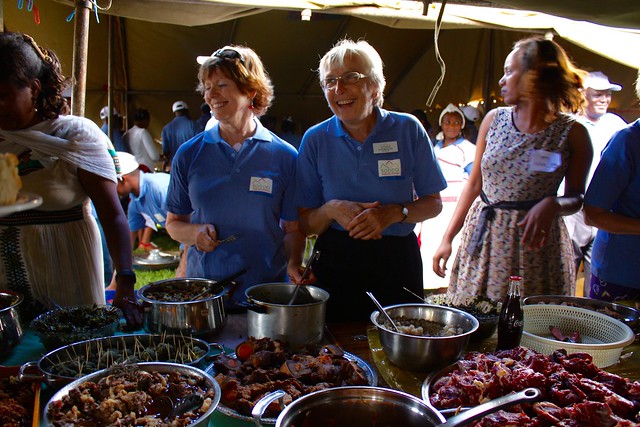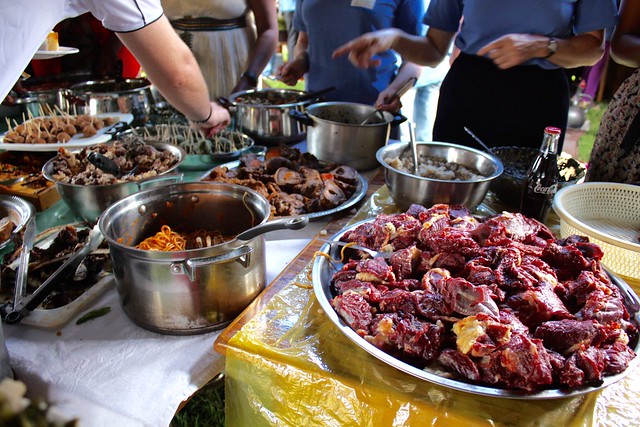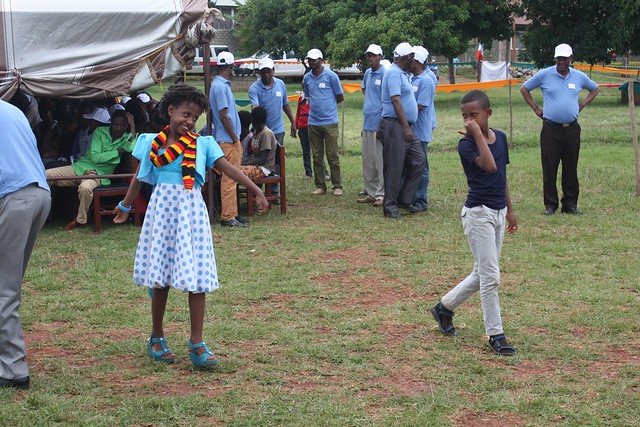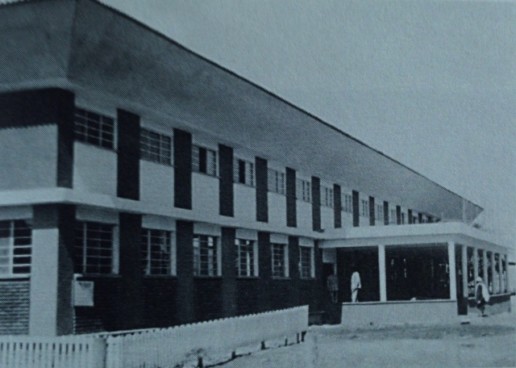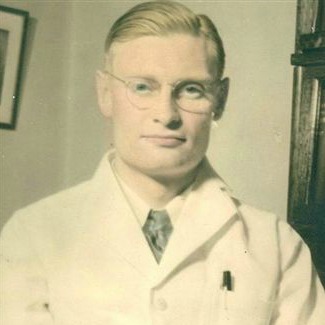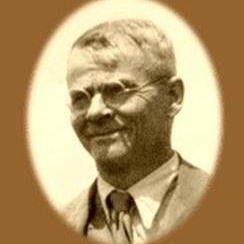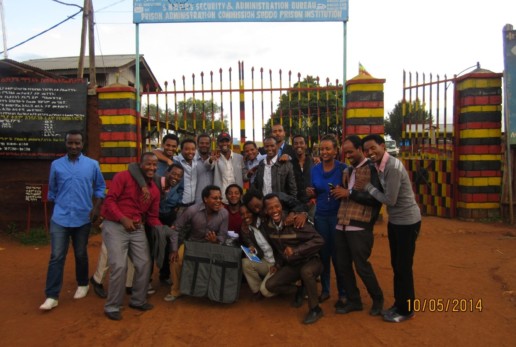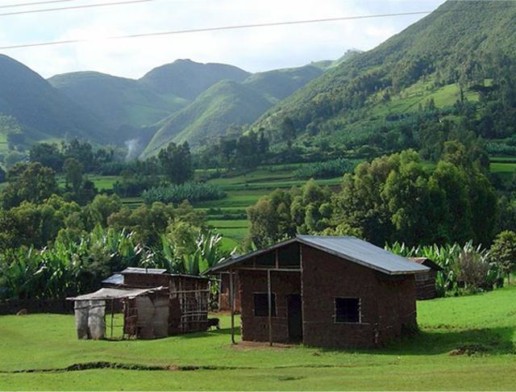Marburg update
Marburg update 12/1/2025
Three new deaths have been confirmed in Ethiopia’s Marburg virus outbreak, bringing the death toll to eight, according to the latest update from Ethiopian health officials.
There are now 12 confirmed cases in the outbreak, which was first reported in mid-November and is occurring in the southern part of the country. Three patients have recovered, and one is still in treatment.
Outbreaks tied to high death rates
This is Ethiopia’s first outbreak of the severe and often deadly viral hemorrhagic fever, which is typically transmitted to people from fruit bats, can spread through contact with bodily fluids and contaminated materials, and is in the same family as Ebola. Nineteen outbreaks have previously been reported globally.
The case-fatality rate in previous outbreaks has ranged from 24% to 88%. Unlike with Ebola, there is no vaccine.
In a media briefing today, World Health Organization (WHO) Director-General Tedros Adhanom Ghebreyesus, PhD, said the WHO is providing testing supplies and protective equipment for health care workers and deploying experts to support local authorities.

Samaritan’s Purse, US, has sent a five member team to assist with training health care workers.

The God of Ethiopia
This poem was written by a recent visitor to Soddo Christian Hospital. He wanted to remember his visit and this was the method God gave him for remembering his trip.
Where do we find God in Ethiopia,
Do we find Him in the bright, round eyes of a young boy in the hospital huddled close to his father?
Do we find Him in the quiet tears and prayers of a rounds team telling a patient he is going to die?
Do we find him in the tears of a young doctor fighting for a patient's eyesight and begging for God's providence?
Do we find Him in the sweet vespers hymns of a staff worn down by the cares of the day?
Do we find Him in the soft rain watering a thirsty land?
Yes, He is there!!
But He is also in the hearts of missionary men and women who have answered the call of God in their lives and given Him all they have.
And yes He is in the sweet minds and souls of those native Ethiopia's who have heard and heeded his call to salvation.
The God of Ethiopia permeates the heart and soul of the land.
Listen!
Hear His soft voice and footsteps all around you.
We Celebrated Our 10 Year Anniversary!!!!
Soddo Christian Hospital has now been open for 10 years, and to celebrate we hosted a 10th Anniversary Celebration in June. Weeks of preparation went into this event, with many of our hospital employees helping around the clock to make this an amazing and beautiful celebration possible. But the most important focus of the event was to honor and thank God for His provision and grace in blessing our hospital for the last decade. Because of Him, the Gospel has been shared with every patient that has come through the doors - more than 30,000 each year!
Approximately 1,000 people attended the celebration, held in a gigantic tent on the hospital compound. We displayed flags honoring each of the different nations that are involved in serving at the hospital. The colors of the nations waving together in beautiful unison outside the tent were a beautiful reminder of how man different people from around the world serve the hospital.
The program honored those who work at Soddo Christian Hospital currently, as well as the pioneers who came before to help establish the hospital. An incredible slideshow recognized all of these brave and obedient servants.
The hospital's kitchen staff and the missionary staff who helped them deserve a special thanks for the meal that followed the program. Serving 1,000 guests with delicious Ethiopian food is not an easy task. Many worked through the night to have just the right number of injera, tibs, and doro wot.
What a beautiful celebration of teamwork, fellowship and cultures coming together to serve the people of Ethiopia and to share God's love. Above all, this was a celebration of God's protection, provision and guidance through the last 10 years.
Medicine + the Gospel - History of SCH Pt. 4
In 1946, the missionaries returned to Soddo, having found a vibrant church had grown in their absence. In addition to this, they reoccupied the hospital they had started before - having to kick out some livestock who had taken up there!
In the following decades, the ministry of the hospital grew. What had begun as primarily a church planting ministry, now evolved into a medical ministry - ministering to the sick and dying in an effort to preach to them the Gospel of Jesus. Dr. Barlow and other physicians cared for burn and trauma patients, obstetric emergencies, malaria, typhoid, leishmaniasis, schistosomiasis, and a whole host of other conditions. The hospital grew to 105 beds to care for the sick of Wolaitta and the surrounding areas. The Gospel was shared, and many came to know Christ.
The conditions were meager, such that in 1967 when Dr. Harold Adolph joined the staff, he described a hospital with walls made from mud and sticks covered with "bamboo mats to keep them from oozing when it rained." The operating room light was a single light bulb dangling from a rusty coat hanger. The OR table only had three legs, with a some scrap pieces of lumber cobbled together for the fourth. In fact, the one sterilizer they had exploded, forcing the surgeons to use the largest pressure cooker they could find to sterilize instruments.

The need for a new hospital was great. And SIM and the doctors began raising funds for that purpose in the late 1960s. By 1975, the new hospital was complete having been built in a period of seven years by five different contractors. Dr. Adolph and the others, however, would barely have any time to enjoy their new facility. In 1974, a coup d'etat forced Emperor Haile Selasse from the throne and brought to power a harsh military and then Communist regime known as "the Derg". Aligning itself with the Soviet bloc, the Derg became hostile to any Western influences, and forced the missionaries to leave the country in 1976. They then took over the new hospital which SIM had built and made it a government hospital. Only God knew then if a medical ministry would return to Soddo someday. St.ay tuned...
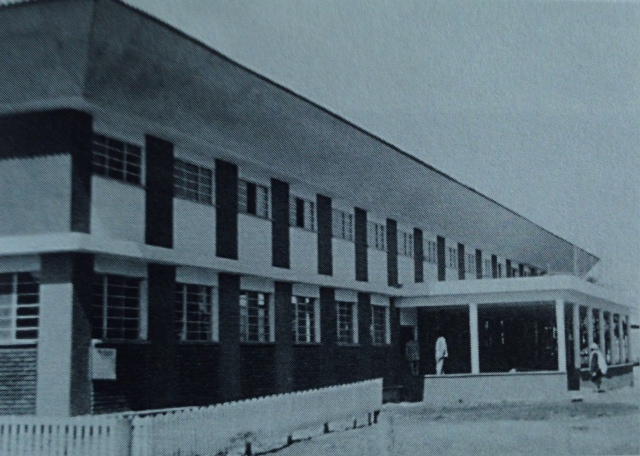
This is the fourth installment in a series of posts about the history of SCH.
SCH Promoting Women's Health
At SCH, we care about the whole person. Of course, we provide great medical care when patients come to the hospital. But we are also looking for ways to improve health in the community. In this case, women's health!
Allison Karnes is the wife of our Ob-Gyn, and Ingeborg Roth is the wife of our Radiologist. The two of them have teamed up to start a new ministry called "WRAPs". What are "WRAPs" you ask? Well, I'll let Allison tell you:
"Hi Friends! Inge and I want to welcome you and introduce you to a very special ministry that we have been working on while in Soddo, Ethiopia. WRAPs: Washable, Reusable, Affordable, Pads. We are empowering school girls to embrace their God-given femininity and learn proper hygiene by providing them with reusable sanitary pads. Most village girls in Ethiopia do not have funds or even access to purchase disposable pads, so therefore, often miss one week of school a month during their menstrual cycle. We are committed to using Ethiopian products as much as possible. Also, we are providing jobs for Ethiopian women as they learn to make our WRAPs. God has given us a dream and it's a honor and joy to see girls tell us that "this product has changed my life!"

Watch this quick video to learn more about us and how you can help!
[ois skin="Blog Post Share"]
A Church Born in a War - History Part 3
When we last left our story, the missionaries in Soddo were seeing new converts under the looming threat of war. What had once been a stronghold of Satan worship and paganism, was beginning to see its first evangelical church!
In February of 1935, the missionaries began building the first mission hospital in Soddo. Only eight months later, the Italian General de Bono marched into Ethiopia with troops without even a declaration of war. The occupation was underway, but in remote Wolaitta Soddo, the missionary work continued on. News came to the missionaries in Soddo as various events unfolded. They worked ever harder to win more and more converts to Christ, knowing that their time in the country may be limited.
On May 5, 1937, Addis Ababa fell to the Italian invaders. It was not known how long, or even if, the invaders would make their way to the southern regions. But they did, and on January 19, 1937, Soddo itself was occupied with Italian troops. Just three months later, the missionaries were forced to leave. Nineteen adults and seven children boarded an Italian army convoy which took them to Addis to depart the country.
In those two years between the first rumblings of war and the evacuation, God added several dozen new converts to the young Soddo church. It was not known what would happen in the years that followed. What ensued was a vigorous persecution of the new Christians. Wandaro himself was jailed and beaten almost to the point of death. As other leaders were imprisoned, and yet stayed strong in their faith, it only gave credibility to the young church. The gospel spread like a wildfire, and converts were added by the hundreds, and then thousands.
In 1945, as World War II ended and the Italians had been defeated, missionaries started to return to Ethiopia. Upon arriving to Soddo, they were greeted and welcomed back by the thousands of Christian believers in Wolaitta. Over 150 churches had sprung up in their absence. They rejoiced to see what God had done in the midst of the suffering that had taken place. A huge vibrant church had been born!
The new converts had done the best they could with no missionaries around. Some rather humorous practices had developed. Some of them recalled seeing only believers at Communion. So the first Wolaittan church adopted the custom of dismissing all non-Christians when the Lord's Supper was served. And they swore the participants to secrecy - not to describe the Lord's supper to anyone. They had also stopped raising goats - due to Jesus's warning that the "goats" would be sent to eternal damnation in Matthew 25!
They had to wait until the fall of 1946 before they were permitted to move back onto the old mission station. At that point, all of the hospital and the residences had been occupied by squatters and their animals. The Ohmans, now with Dr. and Mrs. Nathan Barlow, began taking possession of the hospital back, and gradually restored the place to a usable condition. Even though it would be a while before they could start doing surgery again, the word of their return traveled fast, and already patients were lining up to be seen.
[ois skin="Blog Post Share"]
History of the Mission to Soddo, Pt. 2
How is a church born? In Soddo, it happened like this:
In 1928, the Lambies had arrived in Soddo to set up the mission station. Along with them were the Rhoad family, and three single men: Glen Cain, Walter Ohman, and Clarence Duff. They were invited to set up their homes in a place called Otona which sat atop a foothill just to the east of Mt. Damota. (Soddo sits in the shadow of Mt. Damota which was named for a previous king in this area).
They set to work building their homes which were made of local materials. According to SIM's policy, they were to have the luxury of a bathtub and a cook stove in the home, "so as to add to the missionaries' comfort." They spent their days in the homes of the Wolaitta people, learning their language with one goal in mind: to be able to formulate a Gospel presentation to the people. They established a clinic to provide practical help to the people in that area as well.
In 1929, their forces expanded. The mission team was joined by the Lewis family, Selma Bergstren, and a nurse named Ruth Bray. Within two years, the team had learned the local language enough to present the Gospel. They began preaching at Otona to those who were coming to the clinic - combining physical and spiritual ministry just as we do today at Soddo Christian Hospital. One day, a young man named Wandaro happened to come by and hear the preaching.
Wandaro was from Humbo, a little south of Soddo, and his father was a well-known witch doctor there. On that day, Wandaro had been on his way to the market at Soddo, when a terrible thunderstorm hit, and he ducked into the clinic in Otona to get out of the rain. It was there that he first heard the Gospel, which he said sounded like "honey to his stomach." He was drawn to the message, and a week later went back to hear more. After a third visit, he professed faith in Jesus Christ, and the first Wolaitta believer was born.
In the years that followed, many more professed faith in Jesus, and the missionaries were baptizing new converts regularly. The Lewises lost a baby son three days after birth, and many Wolaittans came to mourn with them. In the wake of this tragedy, many locals became Christians after observing the peace that the mission team exhibited in the face of such tragedy.
By 1936, there were 73 believers in Soddo. The mission had expanded to neighboring villages as well like Koisha, Yirga Alem, and Arba Minch. It was estimated that in all of this southern region, they had seen close to 150 conversions. But the tide of war was sweeping into Ethiopia. The Italians had invaded, and the missionaries were going to be forced to leave. Many of them left with a sadness. Despite what they had seen, they feared it wasn't enough to birth a new church yet.
But God had plans for the Soddo church...
[ois skin="Blog Post Share"]
History of the Mission to Soddo, Pt. 1

At SCH, we are standing on the shoulders of Christian pioneer missionaries and missionary doctors who went before us. As we approach our ten-year anniversary in a few months, we thought we’d take a look at where we began, and how far God has brought us.
Dr. Thomas Lambie was a medical missionary with the American Presbyterian Mission working among the Sudanese Nuer people. In 1918, he became the first American missionary in Ethiopia when he sailed up the Baro River and began working among the people of the Wellega region. He labored there for the next 10 years, founding a hospital, a school, and a vibrant church. At this point, he combined forces with two other missionaries – Albert Rhoad and George Buxton - and founded Abyssinian Frontiers Mission.
Now at that time, Christianity had not made its way into the southern part of Ethiopia. At least fifty different people groups occupied the south, and most were engaged in animistic worship and witchcraft. Some accounts say they were devoted to the occult and the “worship of Satan”. Dr. Lambie and his colleagues were deeply burdened by this and desired to penetrate this area with the Gospel. Abyssinian Frontiers Mission merged with the Sudan Interior Mission (SIM), and was given permission to set up a mission station in the South. The most logical place at that time was Soddo.
The governor of Soddo was a man named Dejazmatch Yigezu who providentially had been a patient of Dr. Lambie’s in Wellega. He remembered the doctor, and welcomed the missionaries. (In addition, the missionaries had the support of Emperor Haile Selassie since the magistrates of Wellega had spoken highly of them). The mission station in Soddo was established by 1929, and evangelistic efforts were spreading out from there to Sidamo (Yirga Alem), and Gamo Gofa (Arba Minch).
It should be noted that Soddo was chosen as the main hub because of its easy access to Addis Ababa. At that time, it took two weeks with a mule caravan to reach Soddo from Addis. But this was considered a good distance for fetching supplies, and yet still to be a good launching point to reach the South!
In the next post, we'll tell you how the Church in Soddo began under the mission work of the Lambies and others...
[ois skin="Blog Post Share"]
Taking the Mission Beyond the Hospital
At Soddo Christian Hospital, we are investing in our staff through discipleship. And some of them took what they were learning to the Soddo community - going outside the camp to bring about transformation. Here's how it happened:

While studying the Gospels in their small groups, some of the members had an idea: to minister to the prisoners in the local Soddo prison. They would share the Gospel and meet practical needs of the people they met. Wanting to hear from the Spirit, they took a month to pray, fast, and ask for God's guidance in their plans. Then, they began to collect donations from individuals as well as the Hospital. Those of us working here were more than happy to play our part in seeing these faithful employees live out our mission in Soddo.
On June 7th and 8th, the group ventured into the local prison. There were 50 people involved in the ministry. Their efforts reached out to 600 prisoners - providing medical services, giving out donated medicines and clothing, and sharing the Gospel of Jesus Christ. In those two days, 74 people prayed to receive Jesus as their Savior. Among them was a man imprisoned for murder. He asked, "Can God really forgive someone like me?" Yes! He repented, and received Christ. Praise God!
One of the core beliefs of our hospital is in doing holistic ministry - sharing with people the salvation found in Jesus combined with practical and excellent medical care. This group of ministers sent out from us carried that holistic message to the broader community. Fueled and excited by seeing the work of God's spirit, they are now planning their next move. They plan to try a similar program in some neighboring towns, or possibly to focus on job creation and discipleship training.


Where is Soddo Anyway?
We get asked this question a lot, so we thought we'd show you. Here is a map of Ethiopia:
As you can see, the capital city Addis Ababa is located smack in the middle of the country. If you visit Soddo, this is where you will fly into, usually from Europe, or maybe Washington, D.C. From the southwest edge of Addis, you head south on the Jimma Road, and right outside of Addis, turn left down the highway that takes you to Soddo. Here's the route:
From Addis, it's about a 330 km, or about 205 miles to Soddo. You pass through 2 major towns, Butajira at around 100km (you're about one-third of the way there) and Hosanna at around 200km (now you're on the home stretch). The journey takes about 5 hours. Often folks will stop for lunch or coffee - we recommend the Rediet Hotel in Butajira. Along the way, expect to see some beautiful rolling countryside, farmland, and Ethiopia chika bets, or mud houses.
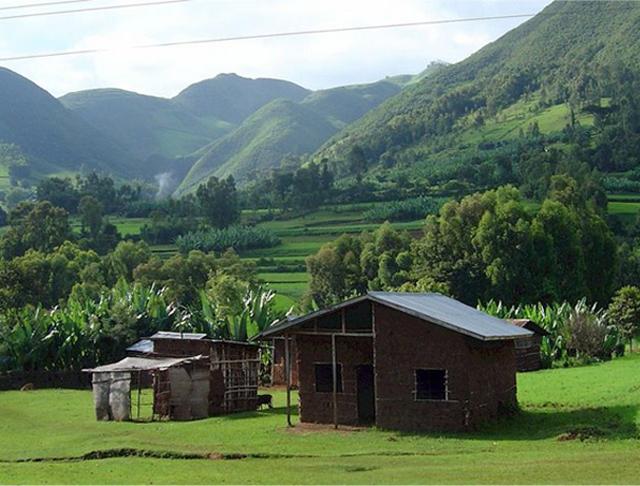
The big towns, like Hosanna and Butajira, are full of retail stores, restaurants, and hotels. When in the towns you will see 3-wheeled motorized tuk-tuks that are referred to as a "Bajaj" after the Indian company that makes them. Here's a couple photos:


And, of course, expect to see plenty of donkeys, donkey-carts, and pedestrians occupying the road as you travel. In fact, many more people on the road in Ethiopia are on foot than in cars!



